In 1896, the “Father of Pennsylvania Forestry,” Dr. Joseph T. Rothrock, stated, “If Pennsylvania were to select one tree as characteristic of our state, nothing would be better than the hemlock.”
More than 30 years later, the Eastern hemlock (Tsuga canadensis) was officially named Pennsylvania’s state tree in 1931.
Known for its massive trunk, beautiful evergreen foliage, and tremendous utility; the hemlock has played a major role in Pennsylvania’s historical development.
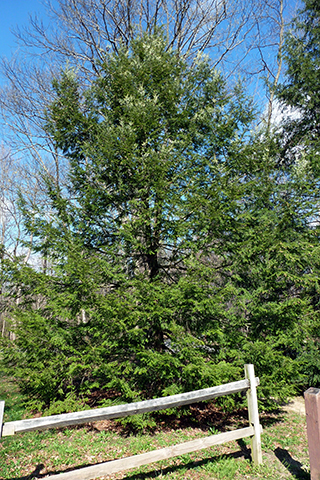
Hemlock was at the forefront of the industrialization of America. Hewn beams of its wood made cabin walls; and hemlock bark provided raw material for tanneries throughout the state.
After widespread deforestation around the turn of the 20th Century, the scarcity of eastern hemlock (and all commercially valuable trees) was becoming apparent.
The official naming as the state tree was, at least in part, an effort to bring attention to the need to conserve this forest keystone species.
Not only does the hemlock help define Penn’s Woods and our state’s history, it provides critical shelter and food for forest songbirds and wildlife, and cold-water habitat for native brook trout.
The importance of conserving the eastern hemlock cannot be understated.
And yet, less than a century later, we find these beautiful evergreens threatened -- not from the ax cuts from thousands of men, but from the piercing mouthparts of invasive insects.
Hemlocks Seriously Threatened by Invasive Insect
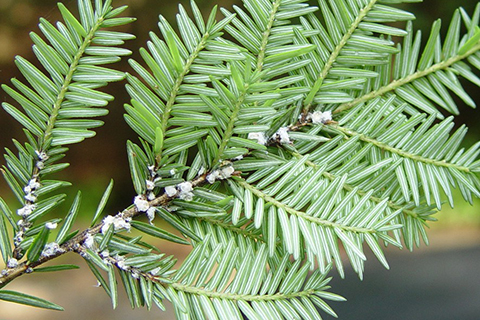
Hemlock woolly adelgid are tiny insects that originate in Asia. They arrived in the United States more than 50 years ago after being accidentally introduced to Virginia.
Their northwestward migration into Pennsylvania has been recognized in 64 of 67 counties so far, essentially occupying the entire state.
Their presence is identified by outward symptoms of a weakened tree (yellowing of needles, loss of vigor) and distinctive, cottony egg masses on the undersides of hemlock needles.
Hemlock woolly adelgid feed by sucking nutrient-rich fluids from the needles, and infested trees often die.
This invasive insect has caused significant hemlock defoliation and mortality in Pennsylvania forests.
Hemlock Woolly Adelgid Threaten Another State Designee
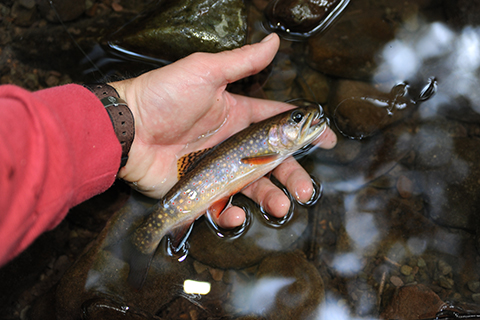
Eastern hemlocks thrive in shaded, cool stream valleys and hollows, of which Pennsylvania possesses thousands. Their tendency for taking root and dominating the overstory in these areas is well noted among foresters and fishermen, alike.
With the decline of eastern hemlock, the fear (and reality) of impacts to our state fish, the brook trout, is becoming well-known.
Brook trout are notably cold-water fish and rising stream temperatures, even a few degrees, could mean the demise of many of their populations.
The immense shade and colder water temperatures provided by hemlock forests around our brook trout havens is now less common because of the hemlock woolly adelgid.
A Conservation Plan for Hemlocks
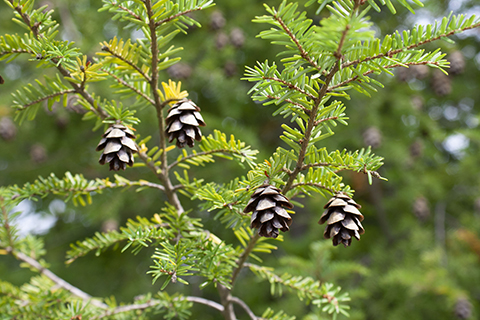
DCNR’s Bureau of Forestry works to ensure the long-term health of the commonwealth’s forests. When the state tree is under threat, serious attention is given to protect it -- and that means attacking hemlock woolly adelgid head on.
To combat this invasive insect, DCNR developed a Hemlock Conservation Plan (PDF) that provides a strategy to conserve this irreplaceable state treasure.
High-priority areas were identified throughout the state (called hemlock focus areas), mostly consisting of old-growth hemlock forests.
The plan also outlines specific measures that are routinely carried out by staff, like surveying, monitoring, and mapping to:
- Identify ecologically significant hemlock stands
- Detect new infestations
- Focus control efforts
- Predict areas most vulnerable to hemlock woolly adelgid
Efforts to control the hemlock woolly adelgid infestation include integrated pest management principles; and the choice of method depends on the site of infestation and other circumstances.
Chemical Suppression
Large, high-priority (ecological, historical, or aesthetic) hemlock stands are treated with systemic chemicals that kill hemlock woolly adelgid.
Many of the insecticidal formulations last multiple years, maximizing the cost efficiency of treatment. Treatments typically involve injections using specialized equipment.
Biological Suppression
Biocontrol of hemlock woolly adelgid is being used in forest situations, on vigorous trees with accessible lower branches that are infested with hemlock woolly adelgid.
DCNR has released predatory beetles at several hemlock sites that feed solely on hemlock woolly adelgid.
Follow-up surveys and studies are still in early stages, but the potential for meaningful control of this invasive insect using this method is promising.
Identifying Resistant Hemlocks
DCNR has partnered with the University of Rhode Island to study and identify hemlock woolly adelgid-resistant hemlock specimens.
A strong possibility exists to find, cultivate, and selectively breed hemlocks that have inherent characteristics that defend against these invasive insects.
If superior cultivars are found, they can then be used in reforestation efforts.
Silvicultural Control
In areas where hemlocks dominate but are now dying (i.e. cool stream valleys), substitute species with similar characteristics are suitable for replanting.
Evergreens with thick canopies, (e.g. white pines and rhododendrons) could theoretically fill the void, helping us avoid the collateral damage to these special habitats.
What Does the Future Hold for Hemlocks?
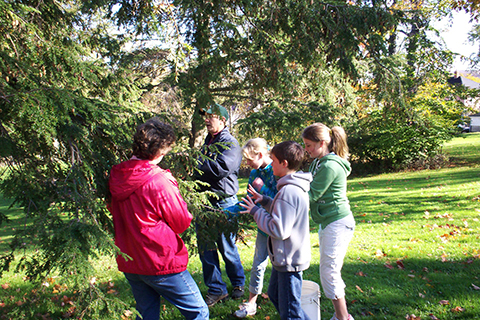
The wave of hemlock woolly adelgid that has swept through Pennsylvania’s hemlocks will leave a legacy of destruction. In the short to mid-term, hemlocks have been (and will continue to be) lost, but there is a strong likelihood we can stave off their extinction.
DCNR is working hard to preserve the species, but measures need to be undertaken to mitigate the damage in the short term.
Additional information about hemlock woolly adelgid, DCNR’s conservation plan, and tips for homeowners are available at the DCNR website.